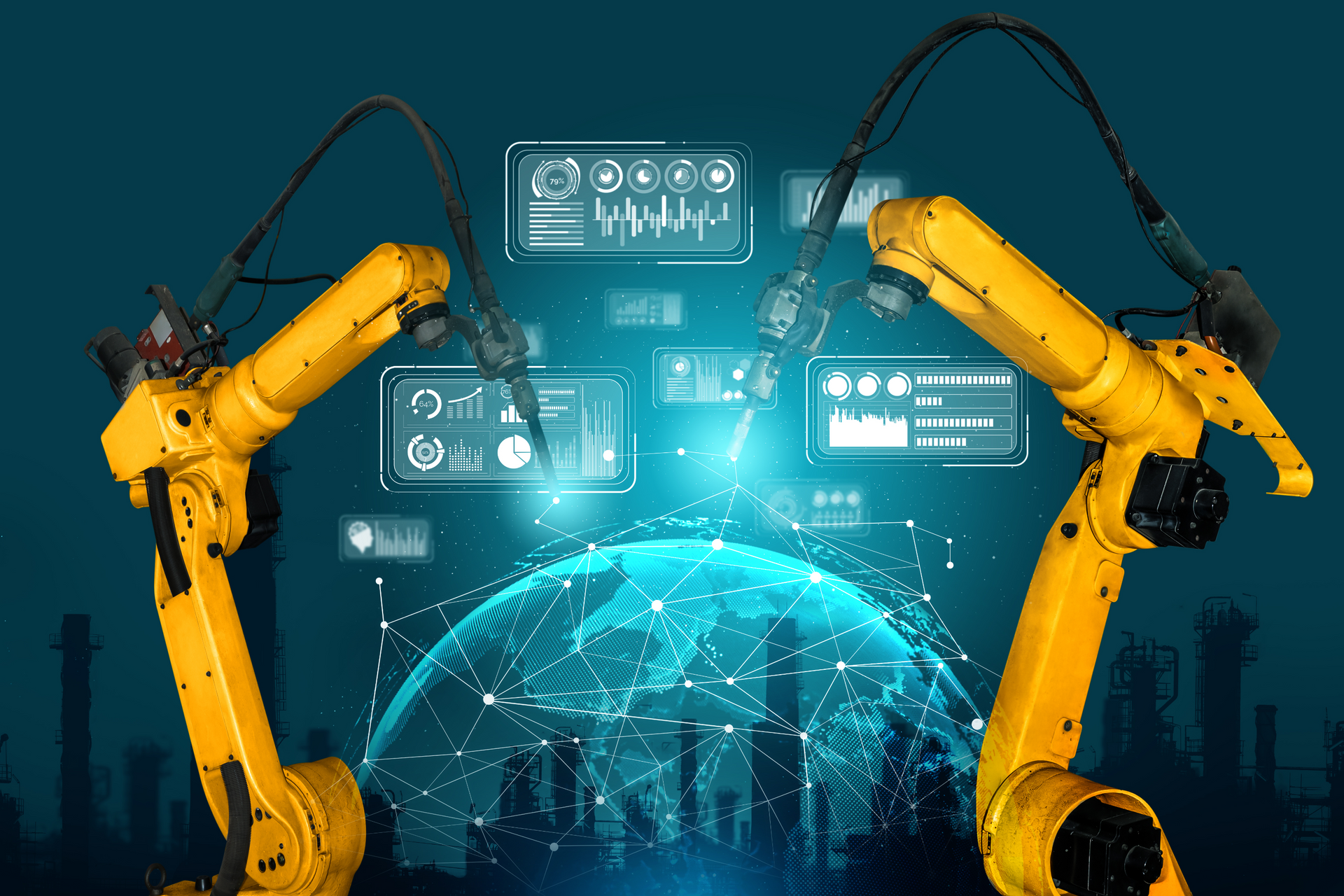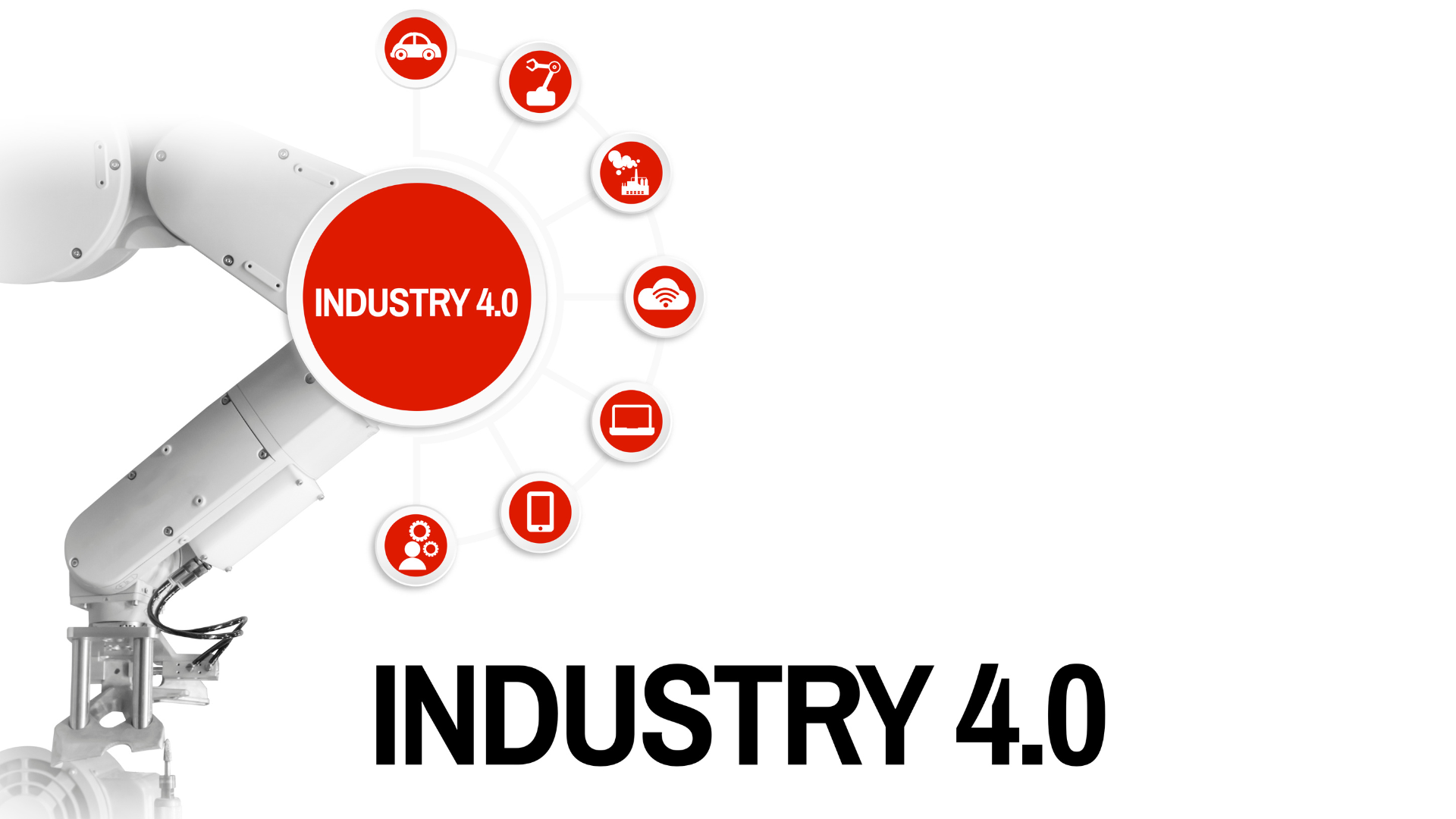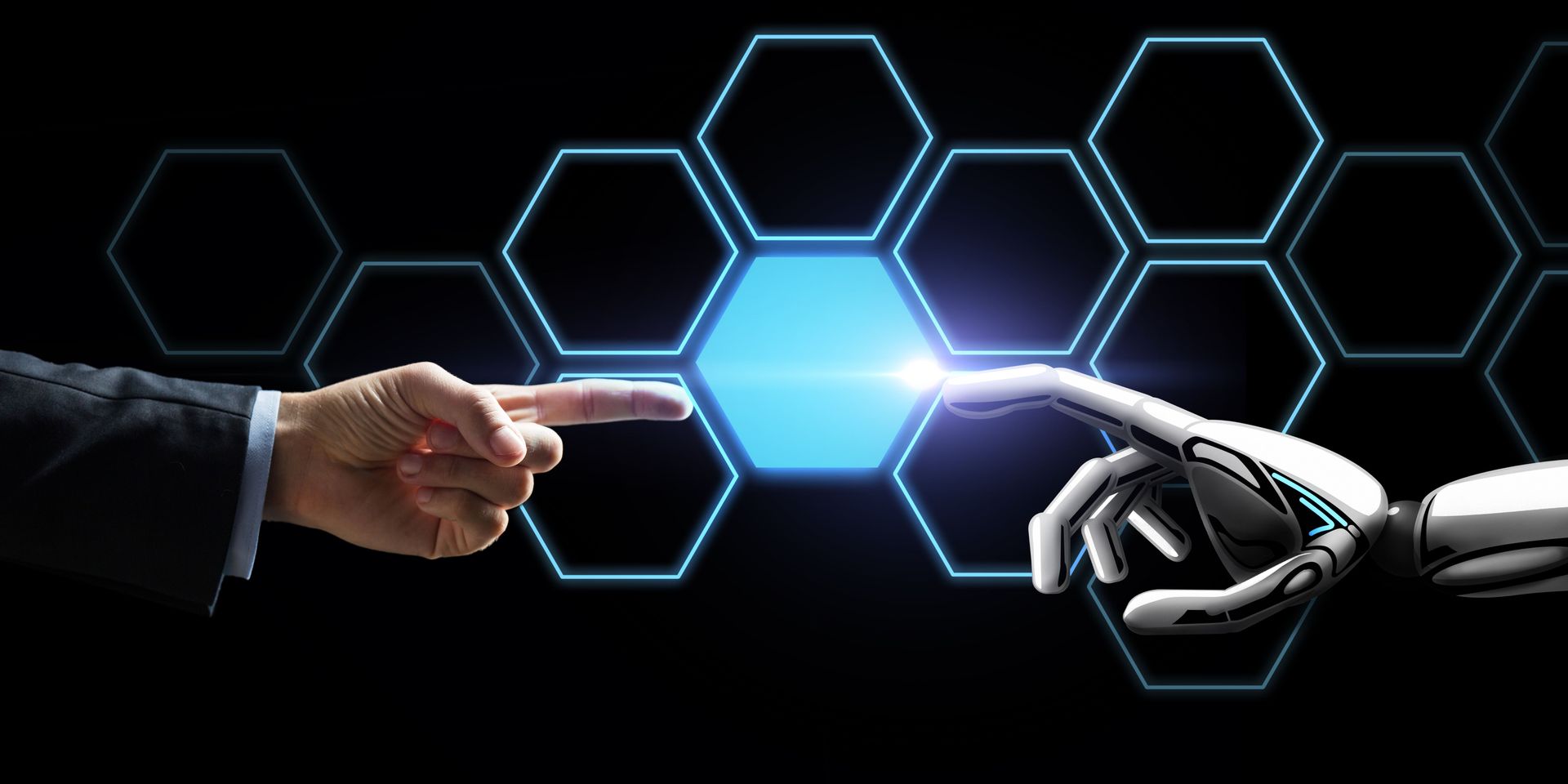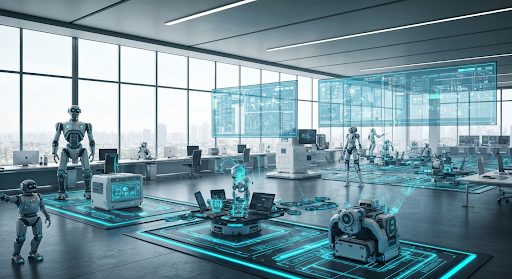The Fourth Industrial Revolution is characterized by the fusion of advanced digital, physical, and biological technologies, leading to unprecedented changes in industry and society. It encompasses the integration of artificial intelligence, robotics, the Internet of Things, genetic engineering, quantum computing, and other technologies, blurring the lines between the physical and digital worlds. This revolution is distinguished by the speed, scope, and systems impact of these changes, driving transformation across industries and sectors at a rapid pace and influencing every aspect of human life, from how we work and communicate to how we manage health and sustain the environment, heralding a new era of interconnectedness and smart automation.
Advantages and Disadvantages of Fourth Industrial Revolution PDF
Industry 4.0
The fourth industrial revolution, often referred to as Industry 4. 0, has ushered in a multitude of both advantages and disadvantages across various industries. This transformative era is characterized by the integration of advanced technologies, such as artificial intelligence, internet of things (IoT), robotics, and big data analytics into traditional manufacturing processes. On the positive side, Industry 4. 0 offers numerous benefits. Firstly, it facilitates increased productivity and efficiency through automation and streamlined operations. This results in reduced costs and enhanced output quality for businesses. Additionally, the utilization of smart machines and interconnected systems enables real-time data monitoring and analysis, leading to improved decision-making processes. Moreover, Industry 4. 0 opens up new avenues for innovation and customization. With advanced technologies at their disposal, companies can develop highly tailored products or services that cater to individual customer needs. This level of personalization not only strengthens customer satisfaction but also contributes to brand loyalty. However, alongside these advantages come certain challenges that need to be addressed. One significant concern is the potential displacement of jobs due to automation. As repetitive tasks become increasingly automated by intelligent machines, there is a risk of job redundancy for certain roles within industries. Furthermore, the reliance on interconnected digital systems exposes organizations to cyber threats and security vulnerabilities. Protecting sensitive data from unauthorized access becomes crucial in this technology-driven landscape. Despite these challenges, it is important to note that Industry 4. 0 brings about an array of opportunities for economic growth and development across sectors globally. By embracing new technologies responsibly while addressing associated risks head-on through robust cybersecurity measures and upskilling workers for new roles emerging from digital transformation efforts - businesses can truly harness the benefits offered by this revolution in industry. This remarkable revolution is defined by the seamless integration of cutting-edge digital technologies into diverse industries, leading to a significant transformation in both our personal lives and professional endeavors. The advent of these digital technologies has revolutionized the way we live, work, and interact with the world around us. From enhancing productivity and efficiency to fostering innovation and connectivity, this profound integration has become a cornerstone of modern society. It has opened up endless possibilities for collaboration, communication, and problem-solving across various sectors, empowering individuals and organizations alike to thrive in a rapidly evolving digital landscape.

What are the advantages and disadvantages of Fourth Industrial Revolution
The Fourth Industrial Revolution Risks and Benefits
The Fourth Industrial Revolution (Industry 4.0) intertwines advanced digital technologies like AI, robotics, and the Internet of Things with traditional industries, heralding increased efficiency and innovative growth while posing significant challenges. While it promises enhanced productivity, economic opportunities, and improved quality of life, it also raises concerns about job displacement, inequality, cybersecurity threats, and privacy issues. Navigating this revolution requires a delicate balance, ensuring that the benefits are maximized and risks are mitigated to foster sustainable and inclusive growth in an increasingly digital world.
Advantages and Disadvantages of Fourth Industrial Revolution PDF
- Advantages of the Fourth Industrial Revolution:
- Increased Efficiency: Integration of smart technologies in manufacturing and other sectors enhances productivity and reduces resource waste.
- Economic Growth: Innovation driven by Industry 4.0 can create new business models and industries, fostering economic development.
- Improved Quality of Life: Advances in technology can lead to better healthcare, smarter cities, and enhanced services, improving individual lifestyles.
- Better Decision-Making: Real-time data analytics aid in making informed decisions, optimizing business strategies and operations.
- Sustainability: Optimized resource usage and reduced environmental footprint through smart technologies promote sustainability.
- Disadvantages of the Fourth Industrial Revolution:
- Job Displacement: Automation and AI could reduce the need for human labor, particularly in manual and repetitive jobs, leading to unemployment.
- Increased Inequality: The benefits of Industry 4.0 might not be distributed evenly, exacerbating income and social disparities.
- Cybersecurity Risks: The interconnectedness of devices and systems heightens vulnerability to cyberattacks, posing risks to individual and public safety.
- Privacy Issues: The extensive collection and analysis of data can infringe on personal privacy if not managed with robust protections.
- Technological Dependence: Overreliance on digital systems can create vulnerabilities, especially if critical systems are disrupted.
What is the Fourth Industrial Revolution
The Fourth Industrial Revolution represents a fundamental change in the way we live, work, and relate to one another, driven by the integration of digital, biological, and physical technologies. It is marked by breakthroughs in areas such as artificial intelligence, robotics, the Internet of Things, genetic engineering, quantum computing, and other technologies. This revolution is blurring the lines between the physical, digital, and biological spheres, creating new opportunities and challenges for individuals and societies. It's characterized by the speed, breadth, and depth of technological changes that are transforming entire systems of production, management, and governance.
Challenges of the Fourth Industrial Revolution
The Fourth Industrial Revolution presents challenges such as significant job displacement due to automation and AI, necessitating a massive reskilling of the workforce to address the skills gap. The rapid pace of technological change also raises ethical and privacy concerns, as well as the potential for increased social inequality if the benefits of new technologies are not distributed widely. Moreover, the cybersecurity risks are heightened with the increased interconnectedness of devices and systems, posing new challenges for individuals, companies, and governments. Navigating these challenges requires a collaborative approach to ensure that the advancements in technology lead to inclusive and sustainable growth.
Characteristics of Fourth Industrial Revolution
What are the Disadvantages of 4IR in Education
The Fourth Industrial Revolution (4IR) brings several disadvantages to education, including a widened digital divide where unequal access to new technologies exacerbates existing educational inequalities. Rapid technological advancements can outpace the curriculum development and teacher training, leading to a gap in educators' ability to effectively integrate new tools and methods. There's also the risk of over-reliance on technology, potentially undermining the development of critical thinking and interpersonal skills. Furthermore, the emphasis on digital platforms can lead to privacy and security concerns for students and educators alike.
Key Impacts of the 4th Industrial Revolution
The Fourth Industrial Revolution (4IR) is reshaping the world in profound ways, with key impacts spanning various aspects of society, economy, and the environment. Here are some of the critical areas affected:
Key Impacts of the 4th Industrial Revolution
- Economic Transformation: 4IR is catalyzing new business models and industries, disrupting traditional ones, and potentially altering the global economic landscape. It's fostering innovation, enhancing productivity, and enabling companies to create new value propositions.
- Labor Market Shifts: There's a significant impact on employment, with automation and AI changing the nature of work. Some jobs are being phased out, while new ones are emerging, necessitating a workforce that is adaptable and skilled in new technologies.
- Education and Skill Development: The demand for new skills is leading to an overhaul in education and training. Critical thinking, creativity, digital literacy, and technical skills are becoming essential, driving changes in educational systems and lifelong learning.
- Healthcare Advancements: The 4IR is revolutionizing healthcare through personalized medicine, telemedicine, wearable technology, and AI-driven diagnostics, improving patient outcomes and efficiency in healthcare delivery.
- Enhanced Connectivity: With the Internet of Things (IoT) and increased digital connectivity, there's a greater flow of information, enabling smarter cities, efficient resource management, and improved living standards.
- Ethical and Privacy Concerns: The rise of digital surveillance, data breaches, and ethical dilemmas around AI and biotechnology raise significant concerns about privacy, ethics, and governance.
- Environmental Impact: 4IR offers tools for better environmental monitoring and sustainability practices but also raises concerns about resource consumption and e-waste, highlighting the need for eco-friendly approaches in tech advancements.
- Inequality and Access: There's a risk of widening the digital divide and exacerbating socioeconomic disparities if access to 4IR technologies is uneven, highlighting the need for inclusive growth strategies.
- Global Collaboration and Governance: The transnational nature of digital technologies and their impact on global challenges like climate change and pandemics underscores the need for international cooperation and effective governance.
These impacts demonstrate the dual-edged nature of 4IR, offering transformative opportunities while posing significant challenges that need careful management and inclusive policies.
Challenges of 4th Industrial Revolution
The Fourth Industrial Revolution presents several challenges, including the displacement of jobs due to automation and artificial intelligence, leading to potential unemployment and social instability. There is a growing need to address the skill gap, as current workforce skills may not align with future industry requirements, necessitating continuous education and training. Ethical concerns arise with advancements in technology, particularly regarding privacy, surveillance, and the potential misuse of AI. Economic disparities could widen as technological benefits might not be evenly distributed, exacerbating inequality. Additionally, cybersecurity threats become more pronounced with increased digital connectivity, posing risks to individual privacy and national security. Regulatory frameworks struggle to keep pace with rapid technological changes, creating governance challenges. These challenges underscore the need for comprehensive strategies to navigate the complexities of this new era, ensuring that technological advancements lead to inclusive and sustainable growth.
What are the Four Main Impacts of the Fourth Industrial Revolution
Fourth Industrial Revolution Essay
The Fourth Industrial Revolution (4IR) represents a fundamental shift in the global industrial landscape, characterized by the fusion of digital, biological, and physical worlds through cyber-physical systems. It is distinguished from previous industrial revolutions by its speed, scale, and force of change, impacting all disciplines, economies, and industries while challenging ideas about what it means to be human.
The 4IR is driven by the advent of new technologies such as artificial intelligence (AI), robotics, the Internet of Things (IoT), autonomous vehicles, 3D printing, nanotechnology, biotechnology, materials science, energy storage, and quantum computing. Unlike previous revolutions, which were often characterized by advances in a single domain, the 4IR integrates multiple technologies in innovative ways, leading to unprecedented paradigm shifts across sectors.
Economically, the 4IR has the potential to generate new markets and drive growth, but it also poses challenges such as job displacement due to automation and the need for significant workforce reskilling. Businesses are compelled to adapt rapidly, adopting new technologies and models to remain competitive in an ever-evolving landscape.
Socially, the 4IR offers significant benefits, including improved quality of life, access to information, and enhanced healthcare and education. However, it also raises important ethical and moral questions, particularly concerning privacy, security, and the digital divide, potentially exacerbating inequalities if not managed with foresight and responsibility.
Technologically, while the 4IR brings advancements that could solve many of humanity's pressing issues, it also presents challenges such as cybersecurity threats and the potential for misuse of technology. Navigating these challenges requires robust frameworks for governance and a proactive approach to ensuring ethical standards in technology development and application.
Environmentally, the 4IR offers tools for better resource management and sustainable development but also risks increasing the ecological footprint if new technologies are not deployed in environmentally conscious ways.
In conclusion, the Fourth Industrial Revolution is a transformative period that requires holistic and inclusive approaches to harness its benefits while mitigating its risks. Policymakers, business leaders, and individuals must collaborate to foster an environment where innovation thrives alongside ethical standards and societal well-being, ensuring that the 4IR leads to a future where progress is shared and sustainable.
Impact of Fourth Industrial Revolution on Economy
What is a Major Problem with the 4th Industrial Revolution
A major problem with the Fourth Industrial Revolution is the potential for significant job displacement due to automation and artificial intelligence. As machines and algorithms become capable of performing tasks traditionally done by humans, many jobs could be at risk, particularly those involving routine and manual tasks. This shift not only threatens individual livelihoods but also poses broader economic and social challenges, including the potential for increased income inequality and the need for widespread reskilling and upskilling of the workforce to adapt to new technological demands. Addressing this challenge requires proactive strategies from governments, industries, and educational institutions to ensure that the workforce is prepared for the jobs of the future and that the benefits of technological advancements are shared broadly across society.
4th Industrial Revolution PDF
The Fourth Industrial Revolution is characterized by a fusion of technologies that blur the lines between the physical, digital, and biological spheres, driven by advancements in artificial intelligence, robotics, the Internet of Things, and more. It's transforming industries, economies, and the nature of work itself, offering tremendous opportunities for innovation and growth while also presenting challenges such as job displacement and ethical dilemmas. As this revolution continues to evolve, it necessitates a comprehensive and inclusive approach to ensure that its benefits are maximized and its potential risks are effectively managed, requiring collaboration across governments, industries, and communities.
Fourth Industrial Revolution Summary
The Fourth Industrial Revolution (4IR) represents a transformative phase where digital, biological, and physical worlds converge, driven by technologies like AI, robotics, and the Internet of Things. It's reshaping industries, altering how we interact with technology, and redefining the workforce, promising significant advancements in efficiency and connectivity. However, it also introduces challenges such as job displacement, ethical concerns, and cybersecurity risks. As the 4IR unfolds, it demands adaptive strategies from individuals, businesses, and governments to harness its potential while safeguarding societal welfare.

What are the Three Major Challenges Related to the Fourth Industrial Revolution
Three major challenges related to the Fourth Industrial Revolution include the risk of significant job displacement due to automation and AI, which necessitates large-scale reskilling and upskilling of the workforce. Additionally, there are profound ethical and privacy concerns as technologies like AI and biotech evolve, raising questions about surveillance, data security, and the moral implications of genetic and AI-driven decisions. Lastly, there's the challenge of ensuring equitable access to the benefits of these technologies, as there's a risk that they could exacerbate existing inequalities, creating a divide between those who can and cannot access the new technological advancements. Addressing these challenges requires thoughtful, inclusive policies and collaboration across sectors.
Industry 4.0 Technologies Examples
Industry 4.0, also known as the Fourth Industrial Revolution, is underpinned by several key technologies that drive its transformative impact across various sectors. Here are some notable examples:
- Artificial Intelligence and Machine Learning: AI and machine learning algorithms can analyze vast amounts of data to identify patterns, make decisions, and predict outcomes, optimizing operations and enabling predictive maintenance.
- Internet of Things (IoT): IoT connects machines, devices, sensors, and people, allowing for real-time data exchange and system monitoring, which enhances efficiency and enables new business models.
- Robotics: Advanced robots, often equipped with AI, can perform tasks with precision and flexibility, working alongside humans or autonomously in manufacturing, healthcare, and other industries.
- Additive Manufacturing (3D Printing): 3D printing allows for the layer-by-layer creation of objects directly from digital models, revolutionizing manufacturing with the potential for customization, reduced waste, and complex designs.
- Big Data and Analytics: The ability to process and analyze large datasets enables companies to gain insights into operations, customer preferences, and market trends, driving informed decision-making.
- Cybersecurity: As industries become more digitized, protecting data and systems from cyber threats becomes increasingly critical, requiring advanced security solutions.
- Cloud Computing: Cloud technology offers scalable resources for storage and computing, facilitating collaboration, data access, and the integration of various services across global locations.
- Augmented Reality (AR) and Virtual Reality (VR): AR and VR technologies can enhance training, design, maintenance, and customer experience by creating immersive or augmented environments for interaction and visualization.
- Blockchain: Although best known for its role in cryptocurrencies, blockchain offers secure, transparent transaction and data management opportunities in supply chain tracking, contracts, and more.
- Digital Twins: This technology creates virtual replicas of physical systems or processes to simulate, analyze, and optimize them in a virtual environment before actual deployment or to monitor them in real time.
These technologies are not only transforming traditional industries but are also creating new opportunities and challenges, driving innovation, efficiency, and sustainability in the era of Industry 4.0.
Fourth Industrial Revolution skills
Skills essential for the Fourth Industrial Revolution include advanced digital literacy, particularly in areas like AI, machine learning, and data analytics, to navigate and leverage new technologies effectively. Critical thinking and problem-solving are vital as automation takes over routine tasks, emphasizing the need for human insight and innovative approaches to complex challenges. Additionally, skills in emotional intelligence, collaboration, and adaptability are increasingly important to thrive in a rapidly evolving work environment that values human-machine interaction and continuous learning. As the 4IR progresses, the ability to continuously learn and adapt to new tools and systems becomes crucial for individuals to remain relevant and contribute effectively in their respective fields.






